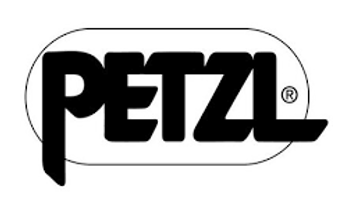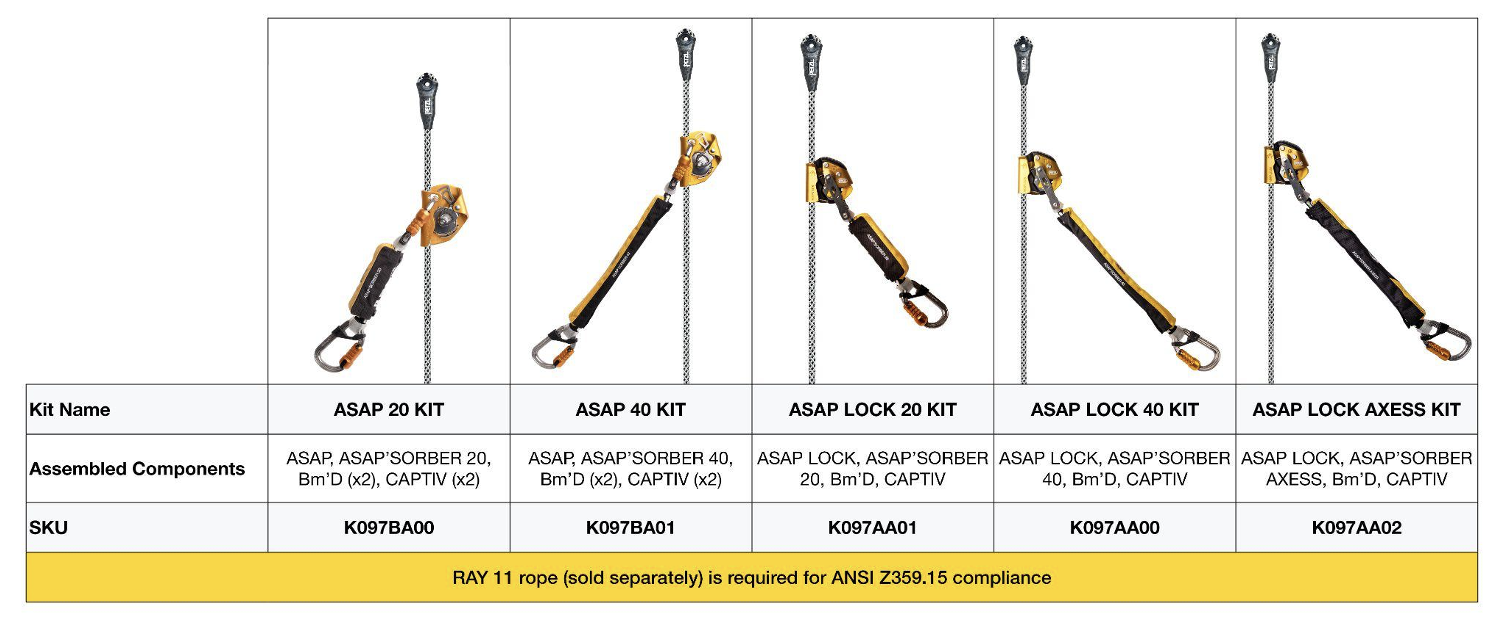
Petzl now offers factory-assembled vertical lifeline kits (with no additional assembly cost) that include either the ASAP or ASAP LOCK mobile fall arresters. Tower technicians can choose from 5 different configurations and several different rope lengths (ropes sold separately) that best suit individual workplace needs. These fall protection systems are used on towers when continuous vertical movement is necessary to access different locations and accomplish different types of work, such as construction, inspection, painting, galvanizing, bolt examination, new equipment installation, or cable installation.
“If you know that you’re going to have to move a good amount of distance vertically on the tower, and there’s no permanent fall protection system in those locations, you have to select and install your own fall protection,” said Michel Goulet, Professional Division Business Development Manager for North America, Rope Access, Tower & Wind markets. “Whether you are climbing the structure itself or if you are suspended by a Rope Descent System or powered ascender, OSHA requires the use of a secondary Personal Fall Protection System like a vertical lifeline and fall arrester.
The ASAP and ASAP LOCK kits include a mobile fall arrester, energy absorber, and connector(s) with positioning bar(s). The kits are certified to comply with the ANSI Z359.15 equipment performance standard (Safety Requirements for Single Anchor Lifelines & Fall Arresters) and OSHA’s fall protection regulations when used with the RAY lifeline. The RAY 11 static lifelines are sold separately, to facilitate proper rope length ordering.
A mobile fall arrester is a device that moves freely along a lifeline without any manual intervention. It is designed to follow the technician up and down the rope with a slight tug on the assembly.
Petzl offers two options for their mobile fall arresters: the ASAP & ASAP LOCK. The ASAP is a simple mobile fall arrester appropriate for use on sloped roofs, in swing stages, on ladders, and on vertical structures. The ASAP LOCK features an integrated locking function that allows the user to immobilize the device on the lifeline to reduce the potential fall distance. It can also be mounted and dismounted from the lifeline while the system stays connected to the worker harness, eliminating potential dropped equipment hazards.
“While some fall arresting devices on the market can be defeated if you grab them or the rope during a fall, the Petzl ASAPs are uniquely designed to function properly and arrest a fall, even if the device or rope is grabbed by the worker,” Goulet said. “This gives workers the confidence that they need when moving several hundred feet above the ground.” Additionally, ASAPs stop falls “as soon as possible” (hence the name), reducing the chances of colliding with obstructions or tower members.”
The ASAP includes a wheel which has a centrifugal clutch inside a protective casing. The wheel’s exterior teeth are in contact with the lifeline and the wheel turns freely along the rope as the technician goes up and down the tower. If the wheel accelerates due to a slip or fall, the centrifugal clutch stops the wheel from turning, locking on the rope and holding the technician in place.
Stopping the fall is only part of the equation. A climber’s gravitational pull can generate substantial energy during a fall, which must be absorbed before the worker is stopped by the fall arrest system. This is accomplished with Petzl’s energy absorbers integral to the kit: the ASAP’SORBER 20, 40 or AXESS. The ASAP’SORBERs are equipped with tear-webbing inside a protective pouch, designed to decelerate and stop a falling worker, keeping the average impact force at or below 4kN (900 lbs. of force). They are designed for users of up to 310 pounds.
The ASAP’SORBER 20 is a 20cm energy absorber that provides a reduced fall distance and thus requires less clearance. The ASAP’SORBER 40 is a 40cm energy absorber that allows the worker to be positioned at a greater distance from the lifeline. For loads of up to 550 pounds, the ASAP’SORBER AXESS 40cm energy absorber is designed to be used for a one or two person load. This larger load could be encountered during a partner rescue situation.
The final key component of the kit is the vertical lifeline. Petzl provides the RAY 11 static lifeline, available with or without a sewn termination, which is sold separately to give climbers a choice of different rope lengths and terminations to tailor to their working environment.
“Some people believe that they can use the ASAP on any lifeline. That’s not true, if you want to comply with the manufacturer’s instructions and meet ANSI standards,” Goulet said. “With a low-stretch lifeline, a fall could elongate the rope and increase your fall distance, causing a worker to hit an obstruction on the tower.” The RAY 11 is made of 100-percent polyester fibers, which is very static, significantly reducing stretch during the deceleration portion of a fall arrest.
If you are a tower technician, needing to access many different locations on complex structures, consider using Petzl’s ASAP & ASAP LOCK vertical lifeline kits to help keep you safe, compliant and efficient during your aerial movements.

For more information, visit the ASAP Kits page on Petzl.com.
By J. Sharpe Smith, Inside Towers Technology Editor




Reader Interactions